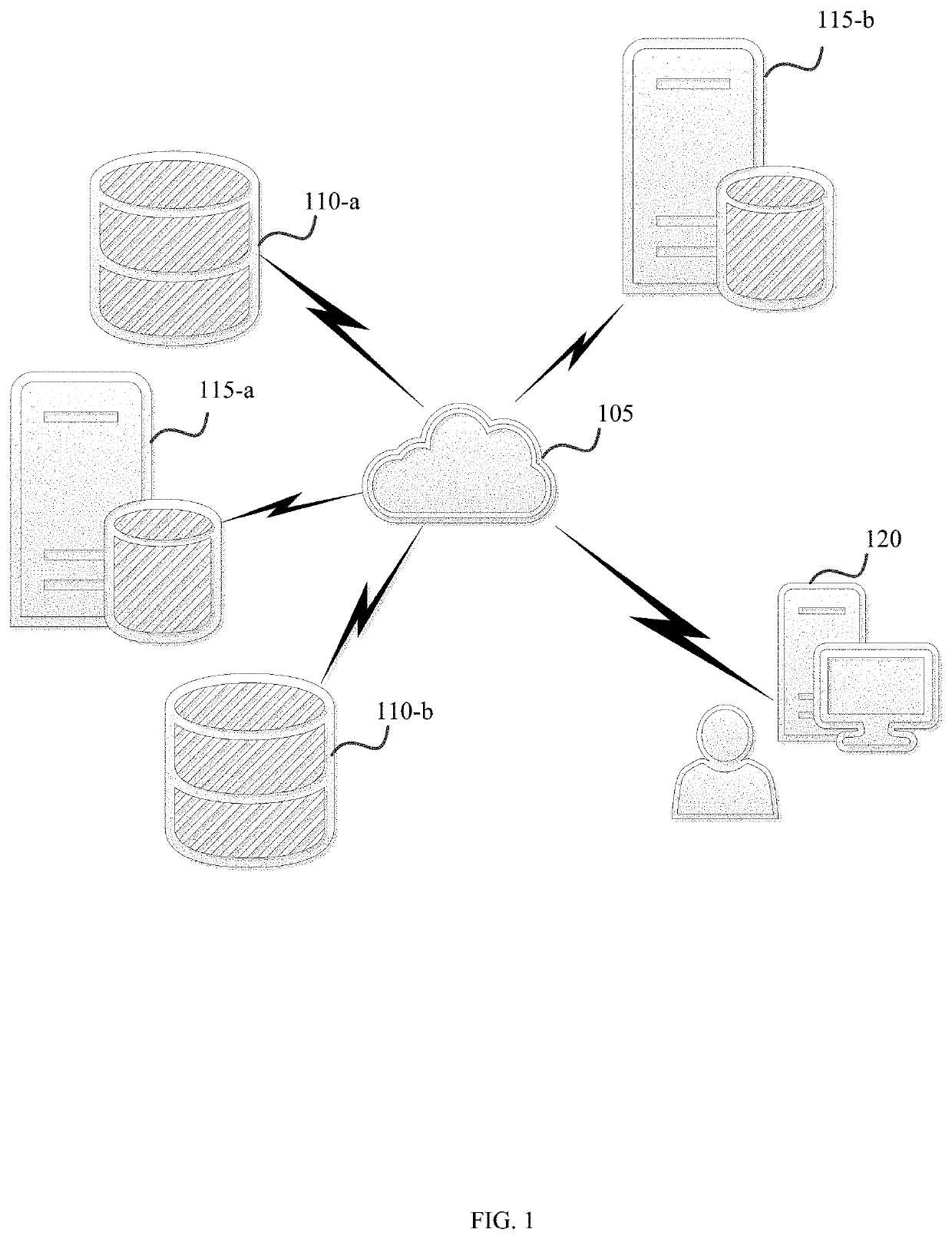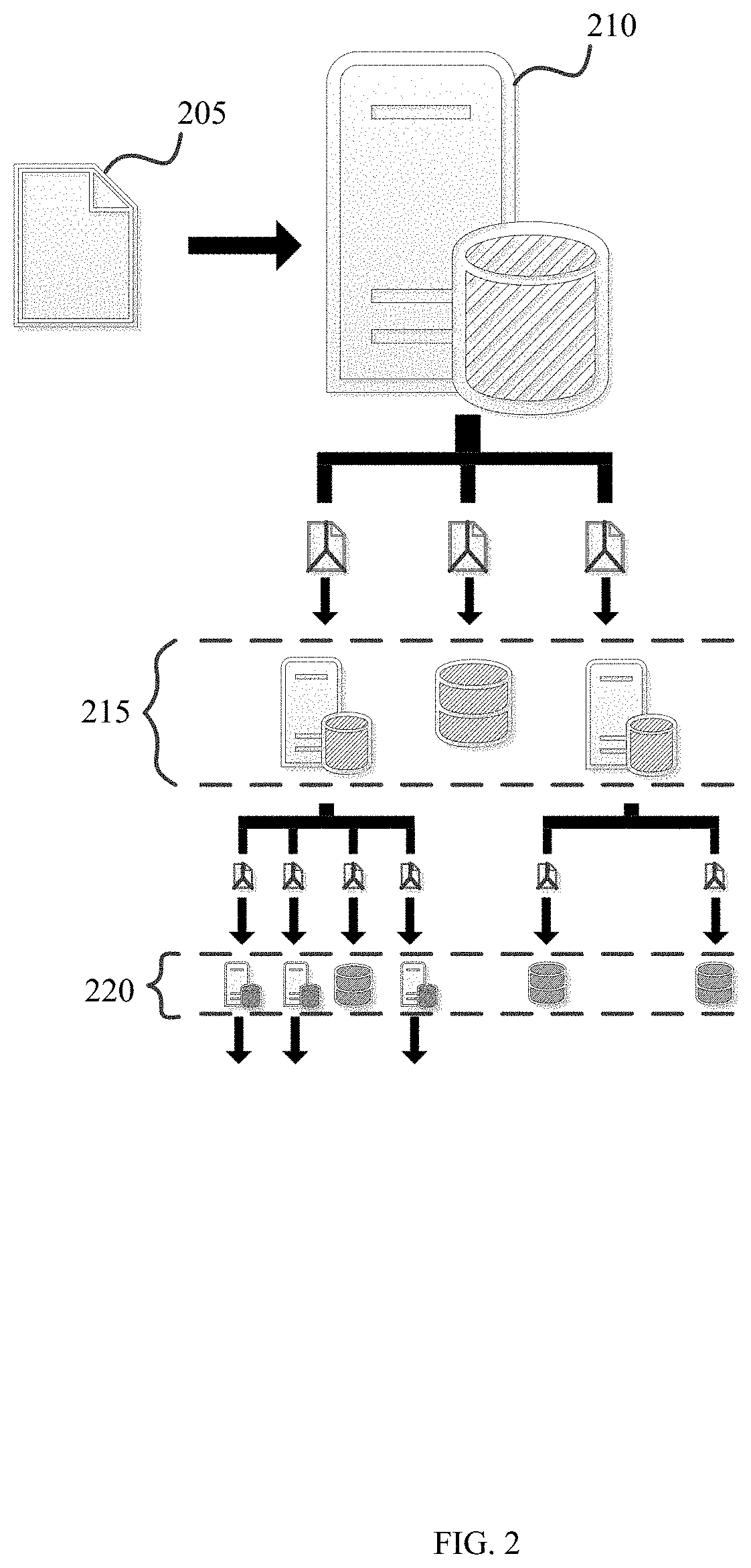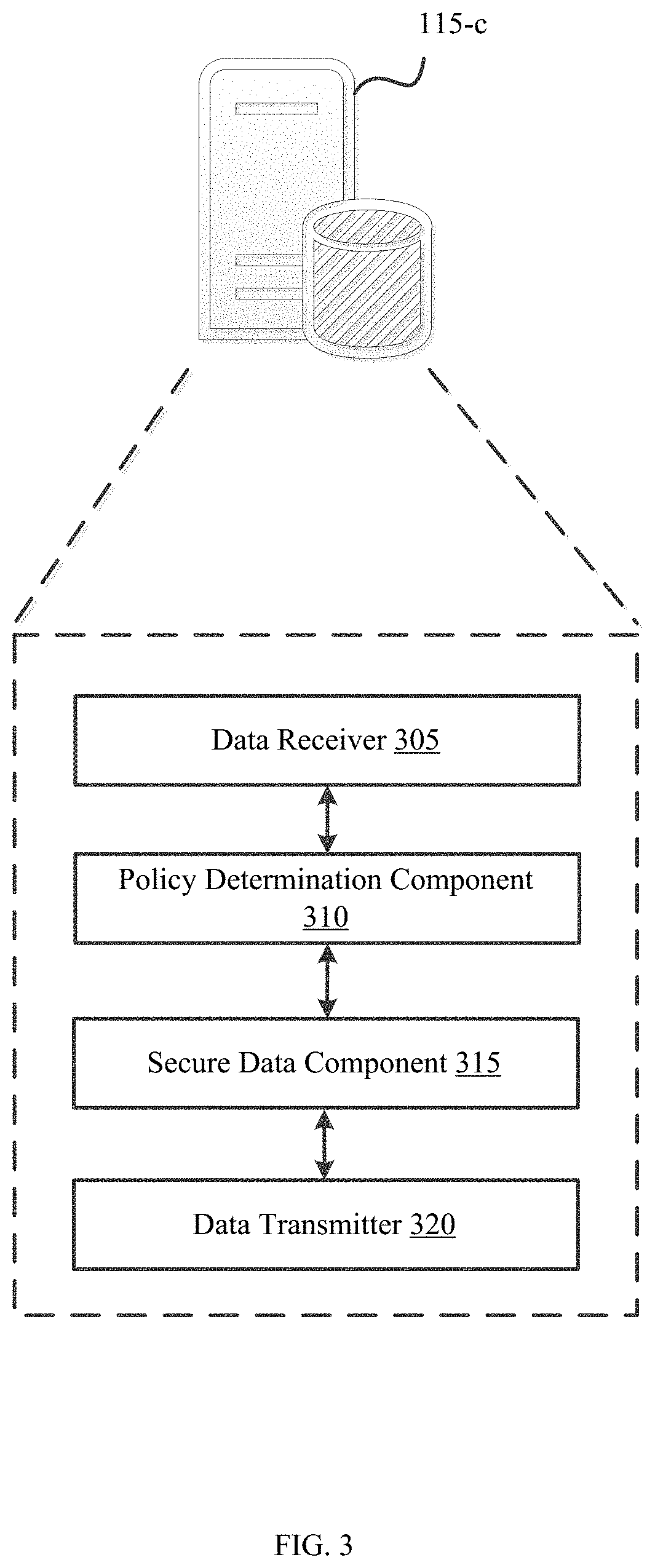Systems and methods for adaptive recursive descent data redundancy
a data redundancy and adaptive recursive technology, applied in the field of adaptive recursive descent data redundancy systems and methods, can solve the problems of data being worthless to the hacker if its owner, data security ineffective in conventional class data theft prevention or attempting to decrypt encrypted data, and encryption keys providing points of weakness, etc., to achieve the effect of reducing the attack vector against compromise, positive carbon effect, and faster data recovery
- Summary
- Abstract
- Description
- Claims
- Application Information
AI Technical Summary
Benefits of technology
Problems solved by technology
Method used
Image
Examples
Embodiment Construction
[0033]Methods and systems described herein relate to adaptive recursive descent (ARD) data redundancy of electronic data.
[0034]An ARD system can fragment and distribute any data object or file, on an object by object or file by file basis, into a dynamic number of distributed fragments. A Quantum Fragmentation instance can receive data input and then cryptographically process, integrity check, and resiliently fragment the input data object or file.
[0035]One or more of those fragments (e.g., resilient, secured fragments) can then be either distributed into different storage locations across one or more Cloud networks or other data stores, such as on a IoT device, local server, mobile phone or laptop etc. This is accomplished through “stealth distribution” in line with a user-controllable and selectable dynamic policy applied to fragments on a data object or file-by-file basis.
[0036]One or more other fragments can also be passed to one or more of the same or other Quantum Fragmentatio...
PUM
 Login to View More
Login to View More Abstract
Description
Claims
Application Information
 Login to View More
Login to View More - R&D
- Intellectual Property
- Life Sciences
- Materials
- Tech Scout
- Unparalleled Data Quality
- Higher Quality Content
- 60% Fewer Hallucinations
Browse by: Latest US Patents, China's latest patents, Technical Efficacy Thesaurus, Application Domain, Technology Topic, Popular Technical Reports.
© 2025 PatSnap. All rights reserved.Legal|Privacy policy|Modern Slavery Act Transparency Statement|Sitemap|About US| Contact US: help@patsnap.com



